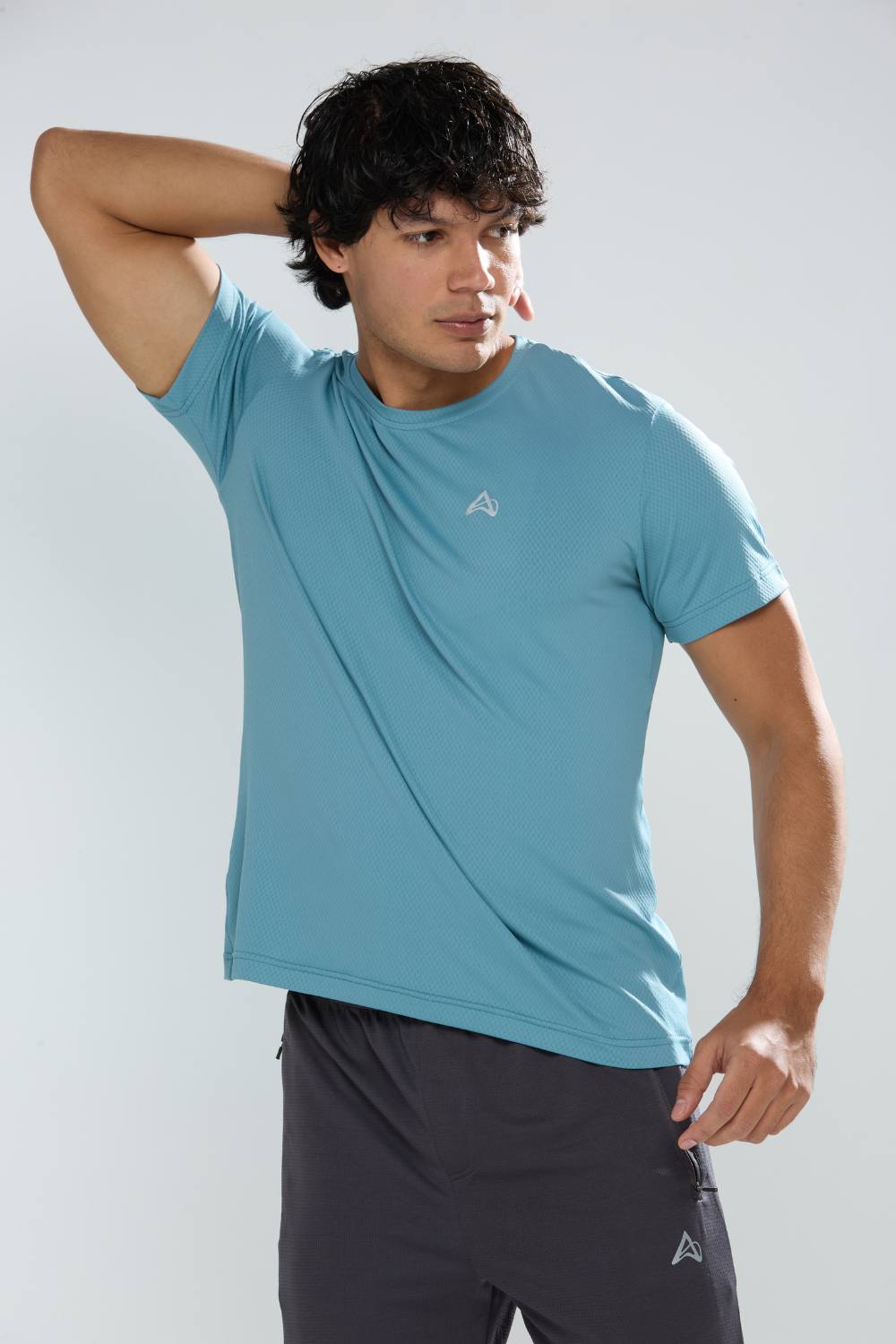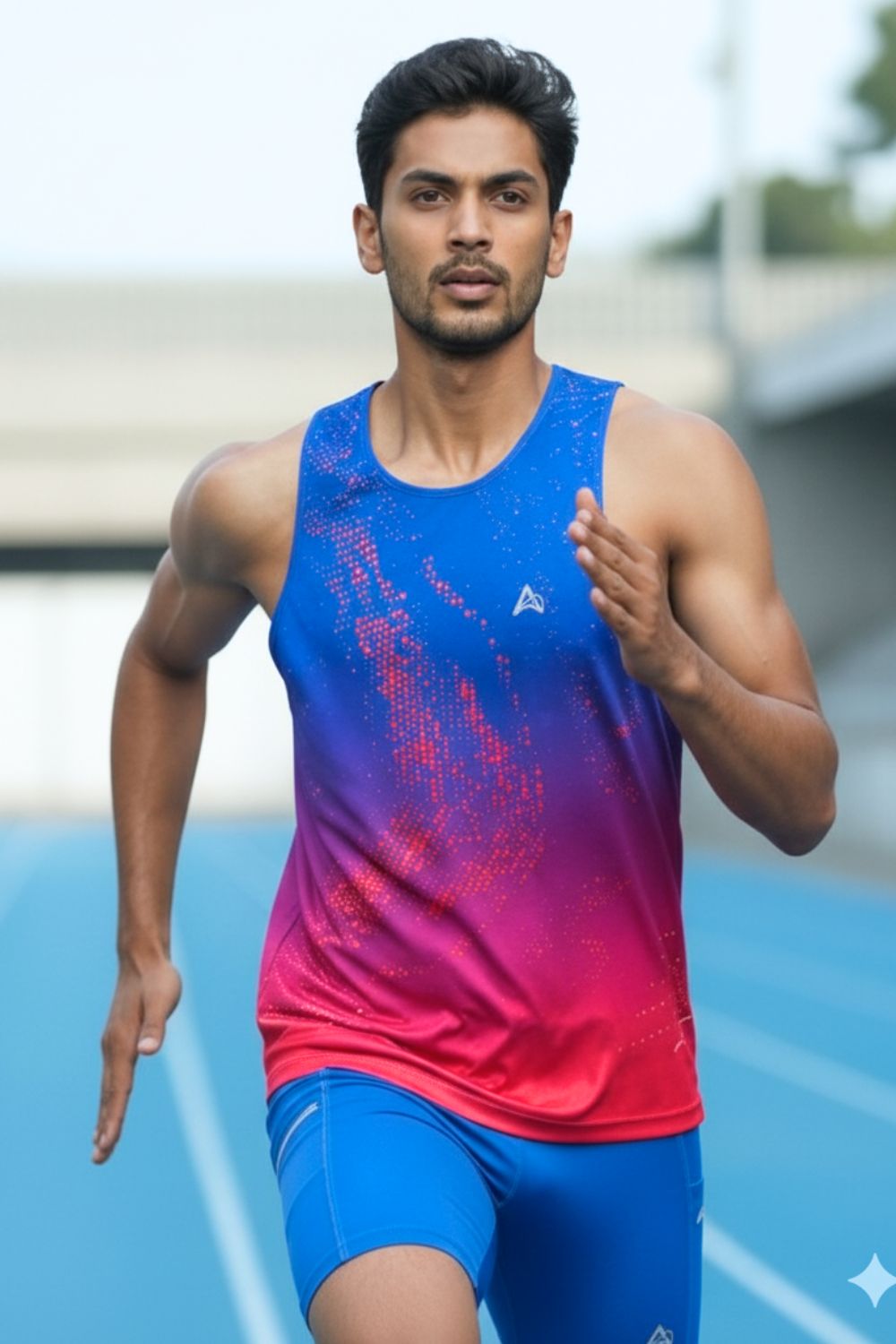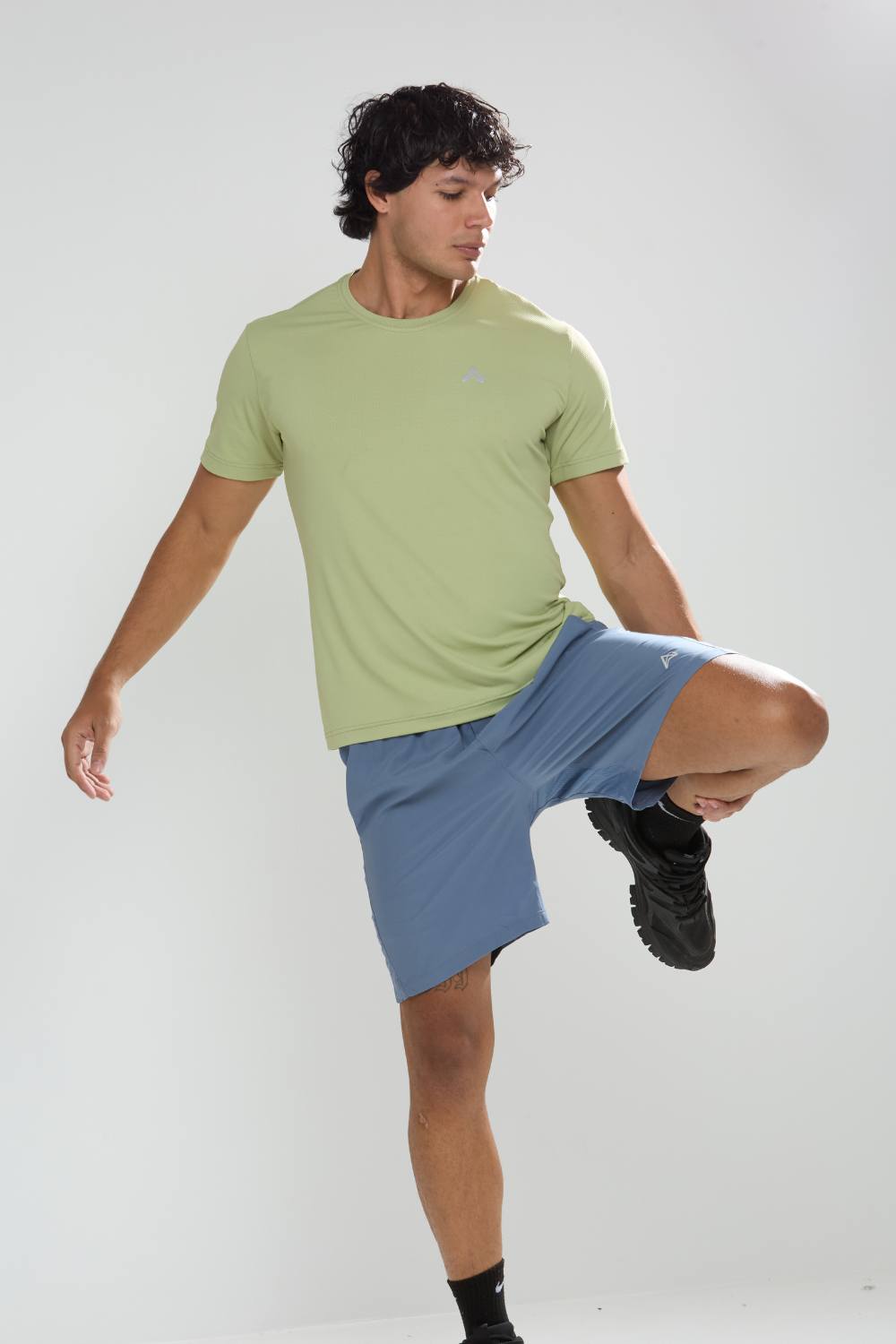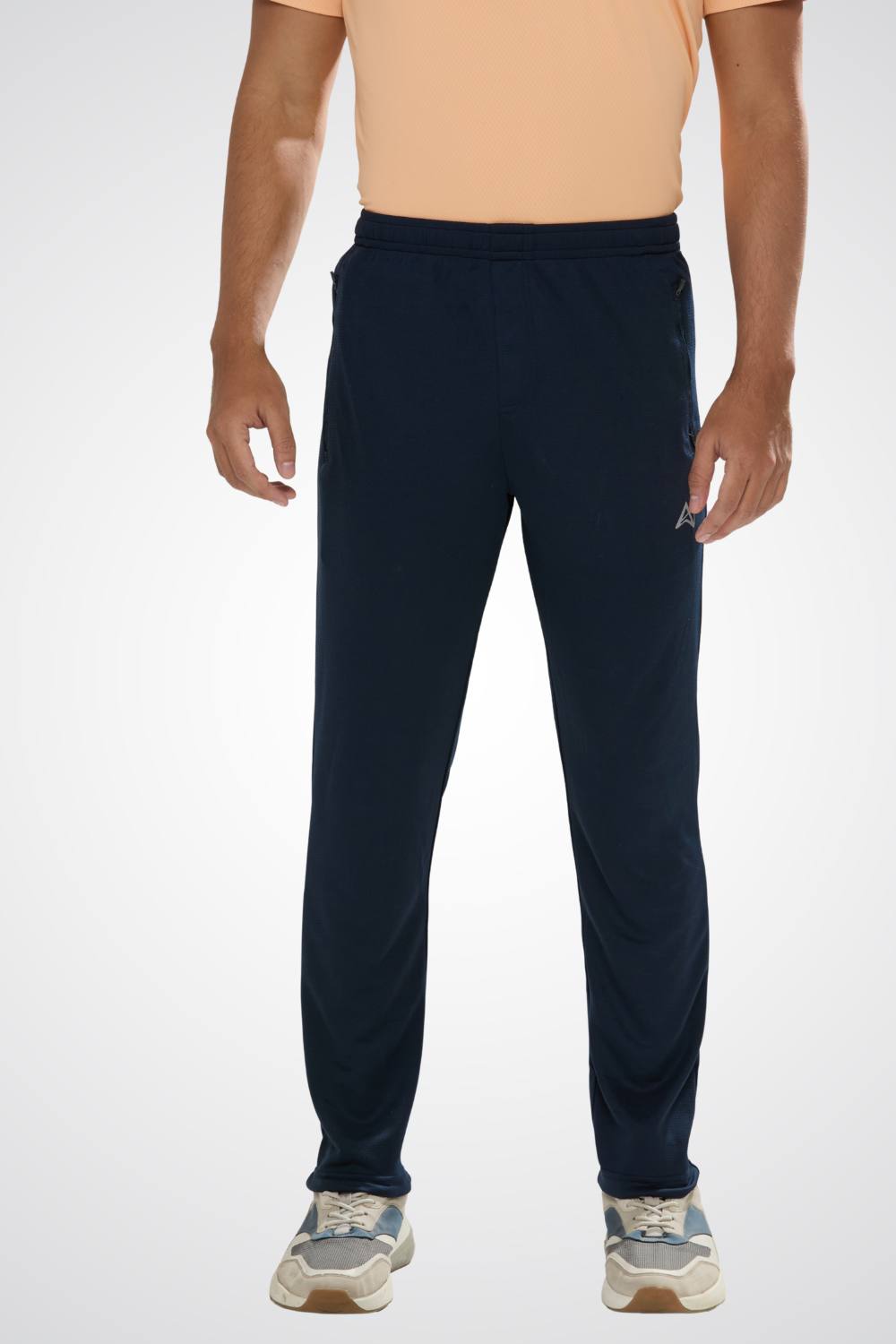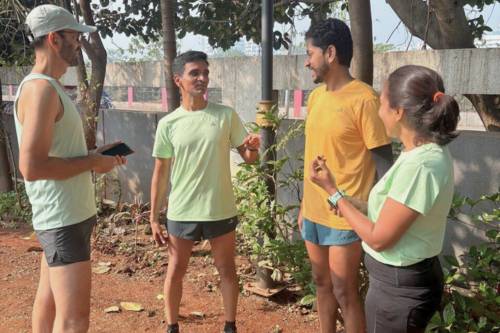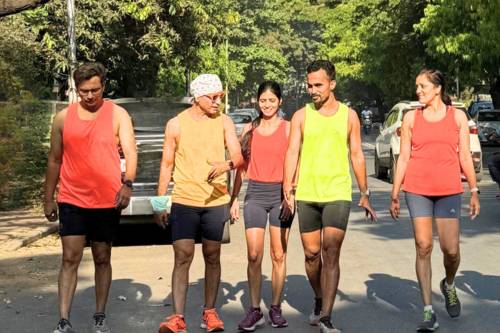Quick Listen:
The first rays of dawn are just beginning to pierce the skyline, yet Mumbai's streets pulse with the steady cadence of footfalls. Runners navigate the twilight fog, their forms faintly outlined against flickering streetlamps and the rush of early traffic. In the vibrant chaos of India's metropolises, where sidewalks jostle with walkers, bikers, and hurried vehicles, running transcends mere fitness it's a dance with danger, hinging on being seen. Amid this surge of activity, a subtle yet profound change is sweeping through sportswear: reflective strips, once mere embellishments, have emerged as vital safeguards for the country's growing legion of pavement pounders.
Tired of gear that slows you down? Chafing, soggy fabrics, and missing pockets kill your run's momentum. At Aguante, we're runners who get it. Our high-performance activewear features moisture-wicking fabrics, ergonomic designs, and smart storage to keep you focused. Shop Now!
Why Reflective Strips Are Becoming Essential in Indian Running Apparel
In India's expanding urban running scene, concerns over road safety and advancing standards in performance clothing are elevating reflective elements to must-have status for athletes. The reflective sportswear market worldwide is set for notable growth, anticipating an addition of USD 424.8 million with a steady 5% compound annual growth rate from 2024 through 2029. This expansion stems from tech innovations, greater emphasis on safety, and the booming interest in outdoor pursuits. As people increasingly value both visibility and functionality in their activewear, companies are pushing boundaries to satisfy these needs. Globally, the sector thrives on the need for apparel that stands out in dim environments, with standout categories like clothing think reflective shirts, outerwear, safety vests, and caps winning favor among bike riders, joggers, and nature lovers alike.
The running landscape in India has undergone a dramatic transformation. Events like the Tata Mumbai Marathon draw nearly 60,000 participants, marking a slight uptick from previous years and highlighting the sport's rising appeal. Similarly, the Hyderabad Runners Marathon in 2025 attracted a record 28,000 entrants, including global competitors tackling the city's challenging terrain. Informal gatherings in places like Bengaluru's Cubbon Park swell with enthusiasts, turning public spaces into hubs of energy. However, this enthusiasm brings hazards. Runners often venture out at dawn or dusk, when poor lighting and congested roads heighten risks. What was once a minor detail on premium outfits, reflective strips now fuse protection with efficiency, fundamentally altering the local activewear industry.
The Rise of India's Running Culture
Running has evolved beyond a simple workout in India; it's a societal movement. Estimates suggest there are 2.6 million runners across the nation in 2025, a staggering leap from just 10,000 two decades ago. This includes dedicated marathoners and casual strollers, all fueled by a collective drive for wellness and camaraderie. Cities such as Delhi, Bengaluru, and Hyderabad buzz with large-scale races attracting thousands, while community clubs flourish in local areas. Yet, the infrastructure lags. Cramped lanes, unpredictable traffic, and inadequate illumination turn routine jogs into perilous adventures.
This is where high-visibility apparel steps in. Demand surges as athletes demand clothing that guarantees they're noticed. Domestic manufacturers are responding by incorporating all-around reflective features into airy, moisture-resistant materials tailored to India's steamy weather. International safety norms, previously remote ideals, now shape homegrown products, bolstered by public initiatives promoting safer streets. Ultimately, this yields gear that excels in function while prioritizing defense against unseen threats.
The fitness market as a whole underscores this shift. India's commercial fitness sector is on a strong growth trajectory, yet overall participation levels remain relatively low highlighting untapped opportunities. Running, as part of this expanding ecosystem, benefits from rising health awareness, with participants increasingly seeking specialized attire and gear to enhance performance and ensure safety.
Real Runners, Real Impact
Consider the spectacle at the Mumbai Marathon: reflective outfits dominate, with athletes in luminous vests and jackets streaking through routes, their glow allowing focus on rhythm over dodging vehicles. In Delhi, amid hazy evenings that obscure vision, collectives praise such clothing for secure group sessions. A member of a Bengaluru early-morning club shared: “Paths felt restrictive before, but reflective attire empowers me to explore extended trails with assurance.”
Brands are attuned to this evolution. Decathlon India and homegrown names like Nivia embed reflective tech across ranges, spanning economical shirts to elite coats. These aren't solely practical; they merge vibrant designs with essential visibility. As noted in the Technavio analysis, items such as reflective headwear and outer layers gain momentum among outdoor aficionados, propelled by necessities in subdued lighting.
Beyond these, other players like Columbia and Brooks offer reflective lines accessible in India, emphasizing fluorescence and contrast for all-angle sightlines. Events further amplify adoption. The 2025 Ahmedabad Marathon and Jaipur runs showcase participants donning gear that aligns with global trends, fostering a culture where safety enhances performance.
The Challenges of Going Reflective
Progress isn't without obstacles. Integrating reflective tech inflates costs, a significant barrier in cost-conscious India. Premium materials elevate manufacturing bills, complicating affordability for occasional users. Aesthetics pose another issue runners sometimes view strips as functional but unfashionable, conflicting with desired streamlined looks. In smaller cities, where running is emerging, knowledge of these benefits remains sparse, hindering widespread use.
Environmental factors add complexity. India's sweltering, moist climate requires gear that's ventilated and featherlight, yet some reflective fabrics can seem rigid or burdensome. Innovators toil to develop pliable, perspiration-evaporating options that maintain shine. Striking this equilibrium is crucial; protection mustn't undermine ease.
Market hurdles include fakes, elevated production expenses, and longevity issues, as highlighted in broader industry overviews. For Indian brands, navigating these while keeping prices competitive demands strategic ingenuity.
Opportunities in a Growing Market
Obstacles aside, prospects abound. As India's wellness crowd swells with fitness penetration poised to climb to 1.7% by 2030 the call for protective clothing represents a lucrative avenue. The anticipated USD 424.8 million rise in the global reflective sector offers Indian firms a platform to differentiate in a saturated arena. Emphasizing security alongside flair allows carving unique spaces for discerning athletes.
Exports beckon too. Aligning with worldwide benchmarks positions local producers for overseas ventures, where vigilant buyers command higher prices. Looking ahead, intelligent fabrics loom large envision LED-infused outfits or sensor-linked wearables interfacing with fitness trackers. Such advancements promise to revolutionize "performance," merging high-tech with core visibility demands.
Regionally, APAC, including India, spearheads growth, buoyed by swift urbanization and activity uptake. E-commerce bolsters accessibility, though countering imitations and costs remains key.
A New Standard for Safety
Reflective strips transcend fads in Indian running wear; they're foundational. Evolving from decorative touches to indispensable components, they're as vital as sweat management or padding. Analysts foresee reflective integrations as norms in sportswear globally and locally within three to five years. The Technavio projections reinforce this, attributing momentum to safety consciousness and tech progress.
Brands face a straightforward imperative: harmonize protection, cost-effectiveness, and appeal to secure runner allegiance. Gear must do more than aid exertion it safeguards lives. As twilight envelops cityscapes and joggers prepare for nocturnal escapades, those shimmering accents on attire signify beyond style. They're a vow, ensuring India's running surge endures securely, dynamically, and without halt.
Frequently Asked Questions
Why are reflective strips becoming essential for runners in India?
Reflective strips have evolved from decorative elements to vital safety features due to India's challenging urban running conditions. With runners often exercising during dawn or dusk hours on congested roads with poor lighting, reflective elements significantly improve visibility to vehicles and other pedestrians. As India's running community has grown to 2.6 million participants in 2025, the need for safety-focused activewear has become paramount, making reflective strips a must-have feature rather than an optional add-on.
How big is the reflective sportswear market and what's driving its growth in India?
The global reflective sportswear market is expected to grow by USD 424.8 million with a 5% compound annual growth rate from 2024 to 2029. In India specifically, this growth is fueled by the expanding fitness market (valued at INR 16,200 crore in 2024 and projected to reach INR 37,700 crore by 2030) and major running events like the Tata Mumbai Marathon attracting nearly 60,000 participants. The combination of increased safety awareness, technological innovations, and the booming outdoor fitness culture is driving demand for high-visibility running apparel across Indian cities.
What challenges do Indian brands face when incorporating reflective technology into running gear?
Indian brands encounter several key challenges when adding reflective elements to running apparel, including increased manufacturing costs that can make products less affordable for price-conscious consumers. The hot and humid Indian climate requires reflective materials to be lightweight and breathable, which can be technically challenging to achieve while maintaining visibility effectiveness. Additionally, some runners view reflective strips as functional but unfashionable, and market issues like counterfeit products and durability concerns add complexity to developing competitive reflective sportswear solutions.
Disclaimer: The above helpful resources content contains personal opinions and experiences. The information provided is for general knowledge and does not constitute professional advice.
You may also be interested in: Breathable Singlets Support Long-Distance Training
Tired of gear that slows you down? Chafing, soggy fabrics, and missing pockets kill your run's momentum. At Aguante, we're runners who get it. Our high-performance activewear features moisture-wicking fabrics, ergonomic designs, and smart storage to keep you focused. Shop Now!
Powered by flareAI.co





